Canadian Gov’t Database Reveals Catastrophic Reproductive Damage to Men and Women Post-mRNA Vaccine Rollout
Overview
We are providing an even more granular analysis of years 2015 through 2022, using data from Ontario Health Insurance Plan (OHIP). This OHIP dataset includes about six million unique patients. Importantly, it contains four years of ‘baseline’ data from before COVID-19 or COVID-19 vaccines appeared in Canada, as well as data from the 2020, when only COVID-19 the disease was present, and the ‘COVID vaccine years’ of 2021 and 2022. This gives us a window into the health changes Ontarians experienced following the introduction COVID vaccines, of which over eighty-five percent of Ontario residents took two doses by March 30, 2022. About fifty percent of people in Ontario received a third “booster” dose by that same date. Therefore, the data reflects a very highly vaccinated population and the fallout from those vaccinations. This dataset shows clear evidence of an increased numbers of patients who sought medical care after the public rollout of COVID-19 vaccines in Canada, for reproductive disorders. The categories of reproductive disorders that showed increased starting in 2021 ranges from male infertility (low- and no-sperm count) to pelvic inflammation to menstrual disorders and post-menopausal bleeding to missed and incomplete abortions, or what is commonly known as
miscarriages.
This analysis reviews data for 2015-2019 and 2021-2022. While data are also available for 2020, we excluded that year from the analysis since it was an ‘anomaly year’ due to lockdowns.
The following slides show the average of distinct patients for 2015-2019 compared with the average of distinct patients for 2021-2022. The calculations were done as follows:
- As an example, Slide #5 for OHIP Diagnostic Code 606 — Male Infertility, Oligospermia, Azoospermia:
- For Code 606, the average of distinct patients for the 2015-2019 Pre-COVID years was calculated and rounded to the nearest whole number — i.e., [(21,551+22,907+23,993+26,350+28,237)/5] = 24,608.
- The same was done for the ‘Vaccine Years’ of 2021-2022: [(32,524+32,868)/2 ]= 32,696 (again rounded to the nearest whole number).
- That same approach was used for each of the OHIP codes examined.
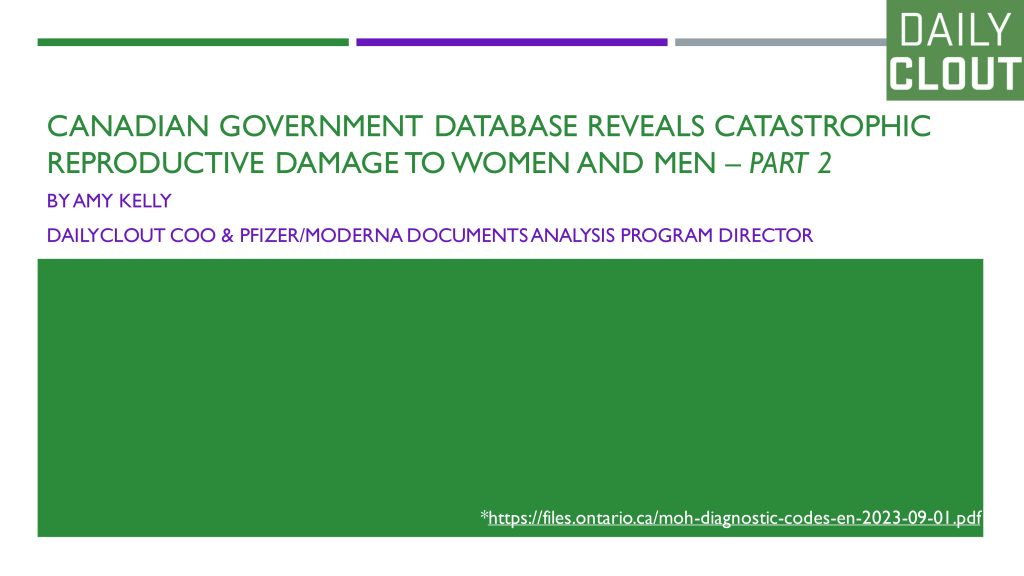

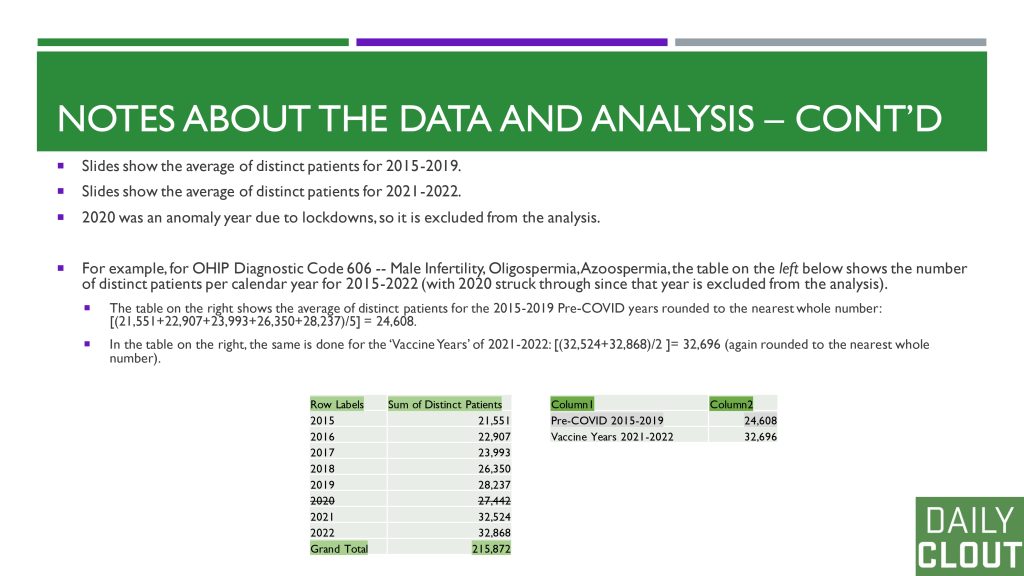

Male Infertility, including low- and no-sperm counts in semen (oligospermia, azoospermia), rose:

The number of patients with female chronic pelvic inflammatory conditions and diseases rose:
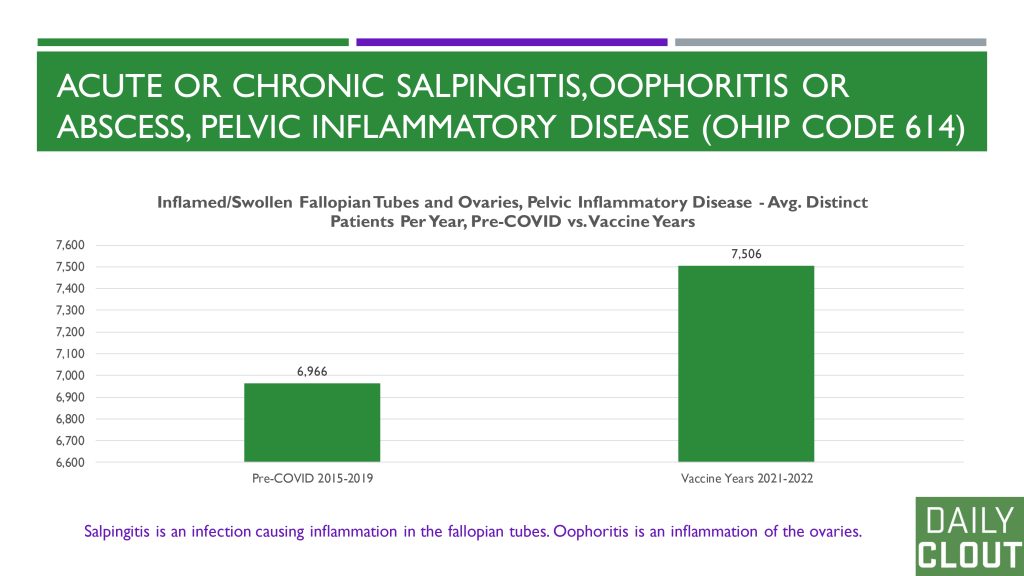
The number of women reporting disorder of menstruation strikingly rose:
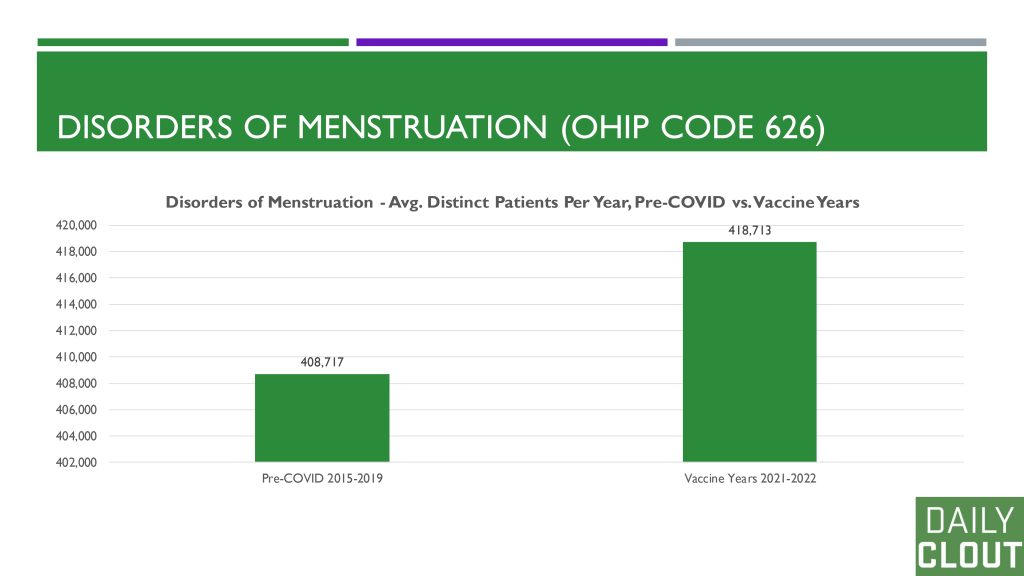
Visits from women reporting menopausal and post-menopausal bleeding also rose:
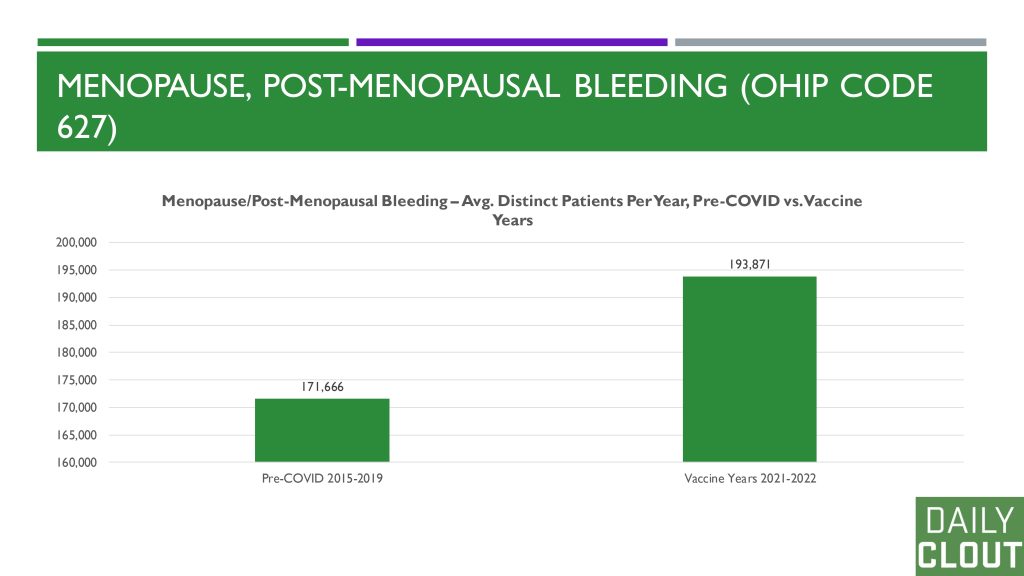
The number of patients visiting doctors for infertility rose:
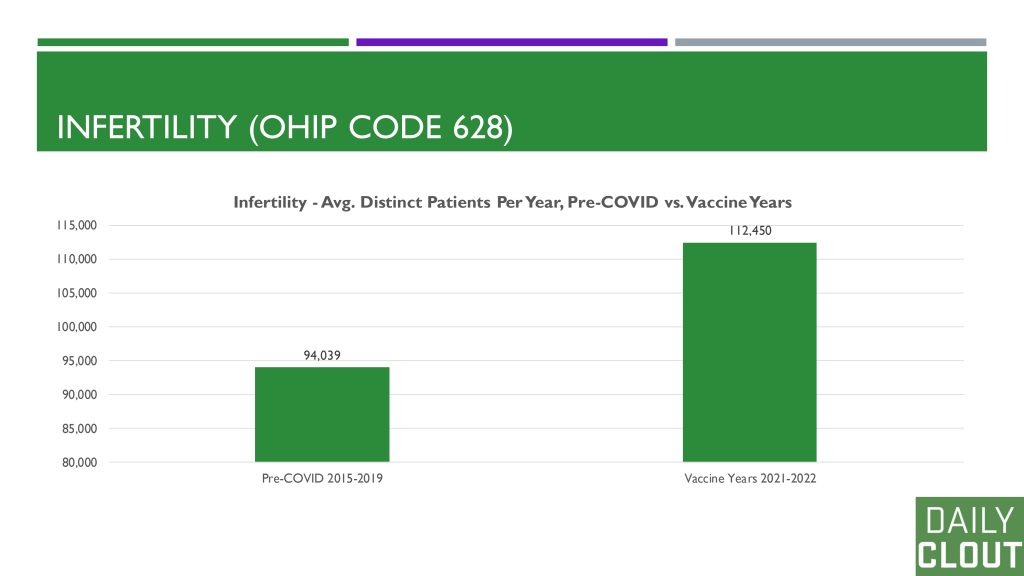
The number of women reporting “Other Disorders of Female Genital Organs” also rose:
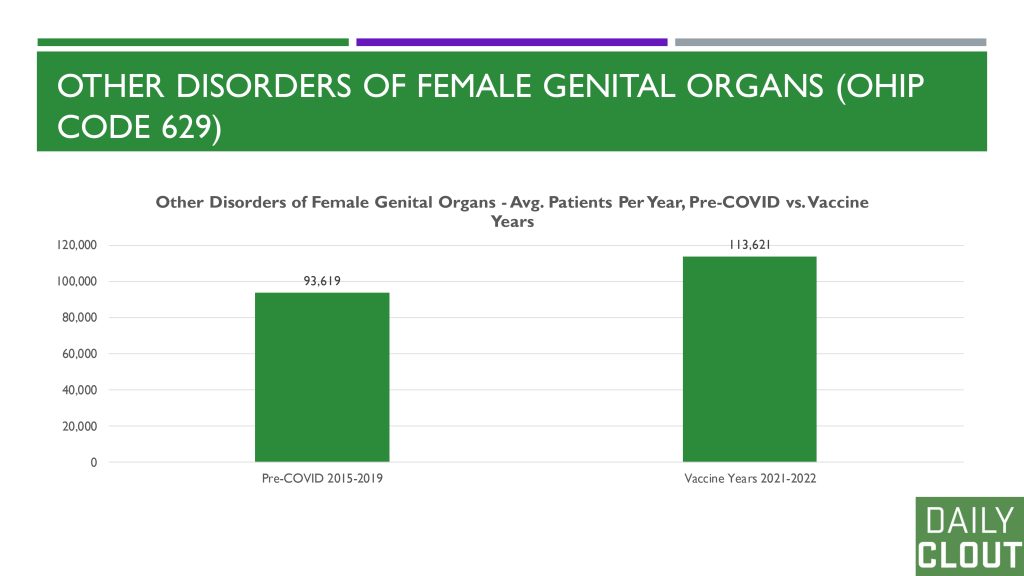
Miscarriages or spontaneous abortions also rose:
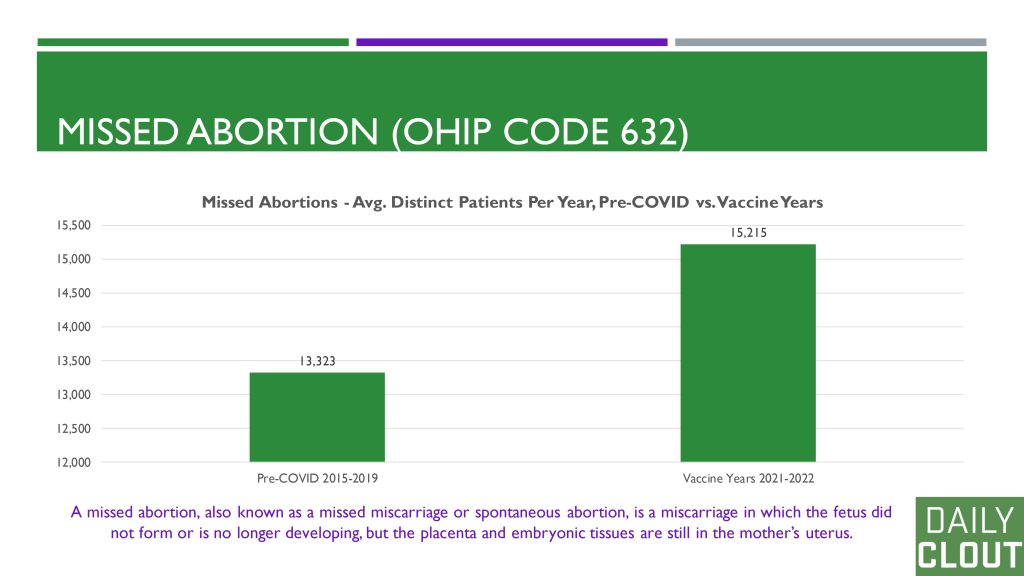
The number of women seeing doctors for incomplete or complete abortions (“in which products of conception have passed and the cervix is closed,” for the latter), which can mean delivery of a dead baby up to 19 weeks’ gestation, also rose:

Download a PDF copy of this presentation.
As you can see, the average number of patients assigned the following reproduction-related diagnostic codes increased, on average, in every category for 2021 to 2022 over 2015 to 2019. This means that Canadian medical professionals found more Ontarians suffering from the following conditions after over eighty-five percent of the population had taken COVID vaccines:
- Infertility in both men and women, as well as low sperm count and absence of sperm in semen in men.
- Inflamed fallopian tubes and ovaries, as well as pelvic inflammatory disease, which can lead to ectopic pregnancy, infertility, chronic pelvic pain, and other related complications. [https://my.clevelandclinic.org/health/diseases/9129-pelvic-inflammatory-disease-pid]
- Menopausal and post-menopausal bleeding.
- Disorders of menstruation.
- Other disorders of the female genital organs.
- Miscarriages including missed abortions, incomplete abortions, and complete abortions.
This evidence, linked below, reveals a clear increase in diseases and disorders of human reproduction temporally following the deployment on the majority of a population of a novel and not yet completely tested medical intervention. A government database consisting of millions of Canadian citizens now corroborates claims and warnings — e.g., women reporting significant menstrual changes post-COVID vaccination in 2021 and 2022 — that until now many have dismissed as “anecdotal.”
It is past time for the Canadian medical and government establishment, along with mainstream medical professionals and legacy media, to stop gaslighting suffering patients. It is time for them to explore the dramatic evidence of the relationship between COVID vaccination rollout and the reproductive damage that tens of if not thousands of patients suffered.
The Data
The data for this analysis: “FOI for Ontario OHIP codes – Female Repro Health & Related – PATIENT COUNTS – Data 2015-2022.”

No comments:
Post a Comment